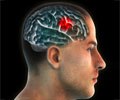Discovery of a new chemical probe which may help investigate the function of malignant brain tumors announced.

Chromatin regulatory pathways play a fundamental role in gene expression and disease development, especially in the case of cancer. While many chemical probes work through the inhibition of enzyme activity, L3MBTL3 functions as a mediator of protein-to-protein interactions, which have been historically difficult to target with small, drug-like molecules.The researchers found three to four further disease subtypes within TN tumors, with more than 75 percent of the tumors falling into the basal-like subtype. Further research is needed to identify the distinct biomarkers shared by the expanded subtypes of TN cancers. The ultimate goal will be to target the individual biomarkers of these subtypes and create therapies that target their individual biology, according to Dr. Perou.
"Many people believe that protein-protein interactions are difficult to target. Often they have a large surface area, so it is hard for small molecules to go in and intervene," said Dr. James.
Almost 40 percent of the genes that drive cancer can be mapped to dysfunction within signaling pathways. In the last five years, chemical probe development has allowed researchers to make fundamental observations of the role of these pathways in cancer development, as well as pointing to potential targets for new therapies. Each of the complex interactions within the signaling pathways represents a potential point where a therapy can be applied, and the probes allow researchers to interact with these processes at the molecular level and observe the overall effect of their perturbation on the disease state.
In a 2008 Nature Chemical Biology commentary, Dr. Frye outlined the qualities that make a good chemical probe. To Frye, a good chemical probe must be highly selective to enable specific questions to be asked and it must function as well in a cell as in the test tube, providing clear quantitative data with a well understood mechanism of action in either situation. It also must be available to all academic researchers without restrictions on its use, a criteria that the L3MBTL3 probe fulfills through the Frye lab's commitment to provide researchers with the probe free of charge on request and UNC1215 is already available through commercial vendors as well.
Source-Eurekalert















